In The Presence of Absence
Visual Essay and Graduation Project

Client
Autonomous
Year
2023
Disciplines
Film, Editing, Installation, Writing
In The Presence of Absence" explores how the recontextualisation of quarries into nature reserves and hiking hotspots downplays human natural destruction. Grounded in research, the vertically stratified visual essay delves into the levels of exploitation involved, from territorial invasion to extraction and touristic activities, revealing hierarchies and the superior gaze of Western society.
The installation reflects on three protagonists involved in extraction. Samples of slate, a mineral heavily used in the beginnings of industrialization for roofing of factories, show their iridescent fossillized flowers from 300 million years ago. Industrial Big Bags, whose invention replaced wooden barrels for material transportation, maximised logistical capacity and therefore the volume of extraction. Finally, the human takes seat in them, enjoying the comfort they provide. Some even fell asleep. Only leftover or reuseable materials, have been used for the set up, except the 160x240cm canvas.
Film material has been recorded at the Piesberg and Dyckerhoff Quarries (DE) and a construction side in Münster (DE), negatives shown in the epilogue originate from the Dyckerhoff Lengerich Archive.
Three Channel Video Installation, 1920 x 3240px, 00:28:55, 2023
Companion Essay
Shaped through milions of years, the ground yields our weight with infinite solidarity. Its fertile soil allows for roots to grow, graciously providing 95% of the nourishment we require to thrive. You, me, nonhumans — we all are deeply interwoven with the ground. It bears witness to all actions of its residents. As a permeable mebrane between past and present, it internalized Earths complex history layer by layer, down to the core. A mere centimeter of crafted topsoil passages 300 to 400 years. Driven by erosion, material artefacts downstream to the bottom of water bodies, percolate through sediments, and undergo cementation to solidify into rock.
Fossilized flowers portray mineral formation and the dignity of all materials. Miles under our feet they gleam in secret, too precious to be left uncovered. Convective currents in the Earth’s mantle orchestrate perpetual geological metamorphosis throughout expansive periods of time. Roaring through centuries and continents, sublime over concepts of control or ownership.
12,000 years ago. Untamed rivers flowed wildly in volatile environments, next to nomadic humanoids. 5,000 years later the availability of water began to exhibit predictability and sea levels stabilized globally due to polar glacier melting. Civilisations of the surface were confronted with new routines, among them us, the humans. Rich soil and regulated flooding facilitated the emergence of agricultural practices alongside the rise of early civilisations. Human quarrying activities of limestone and flint begin, guided by systematic quality evaluation. As a first impulse of human metaphysical reconstruction, space is organized through the erection of architecture – opening up questions of the self and the world, interiority and exteriority, life and death. Continual occupation fosters exclusion: With our roofs, ideas of ownership arise, providing a perspective of territorial control. It is specifically the western gaze that gradually turned from horizontal to vertical perspective, looking down on earth and every of it’s residents as a resource. Flat as a paved surface, aerial perspective keeps distance to the matter and reduces the physical world’s multifacted nature to an imaginative model of reality. Vertical gaze replaces the colonial idea of endless horizons by abundantly available minerals below the surface.
Announced by ascending clouds of mist, the industrial age begins.
Automation and mass production introduce a paradigma of unprecedented scale, shaped by its relentless hunger for resources. Western societies demand more and more of it, more than the skin of planet earth can provide. To comply with standards of living, the extraction of vital resources is externalized to specific regions, offering the desired abundance of resources. Scoop by scoop, Mines extend human presence vertically into the ground. Landscapes of absence emerge, as windows into the past. Former environments metamorphose into places shaped by profit—meticulously surveyed, possessed, utilized, and consequently, irreversibly altered. Rational calculation, abundant use of energy, and the precision of machines transform environmental violence into a wonder. Mines are also subject to criticism, but it is important to acknowledge that their flame is lit by our demands throughout decades. The global building floor is about to double by 2060, outspacing population growth by 50%. Our rising architectural adifices cast a shadow upon the hollow mountains left behind.
In far distance, the sources of our consumption fade away from immediate sight, becoming hidden within the fabric of our existence. Instead, they morph into silent spectacles. With 50-70% of altered ground worldwide, it is left to mines to present the pristine. Contextualized as recreation centers, violent marks of extraction become object to touristic gaze. Brought around its skin, sediment layers concealed for countless millenia are revealed, providing territory for alpine animals. Their excrement, sprinkles of irony. The planet wakes up, tickled by wheel loaders, blinded by the light. It falls asleep again, and keeps on spinning as before. Elevated hiking trails and viewing platforms offer tourists a superior, almost vertical perspective from above. The human spectator appears heroically larger in contrast to the massive scenery, which in its monotone miniature prevent emotional identification. Neither look the rolling machines to be harmful, the landscape to be detrimental, nor do those processes seem related to the room you are standing in. You are In The Presence of Absence.

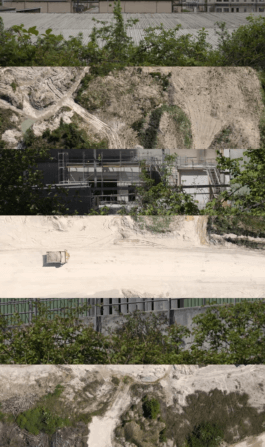


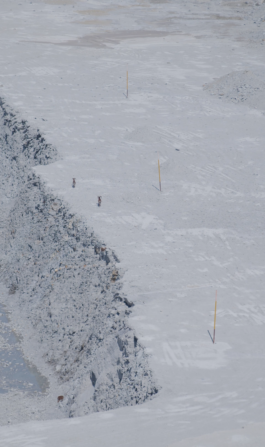







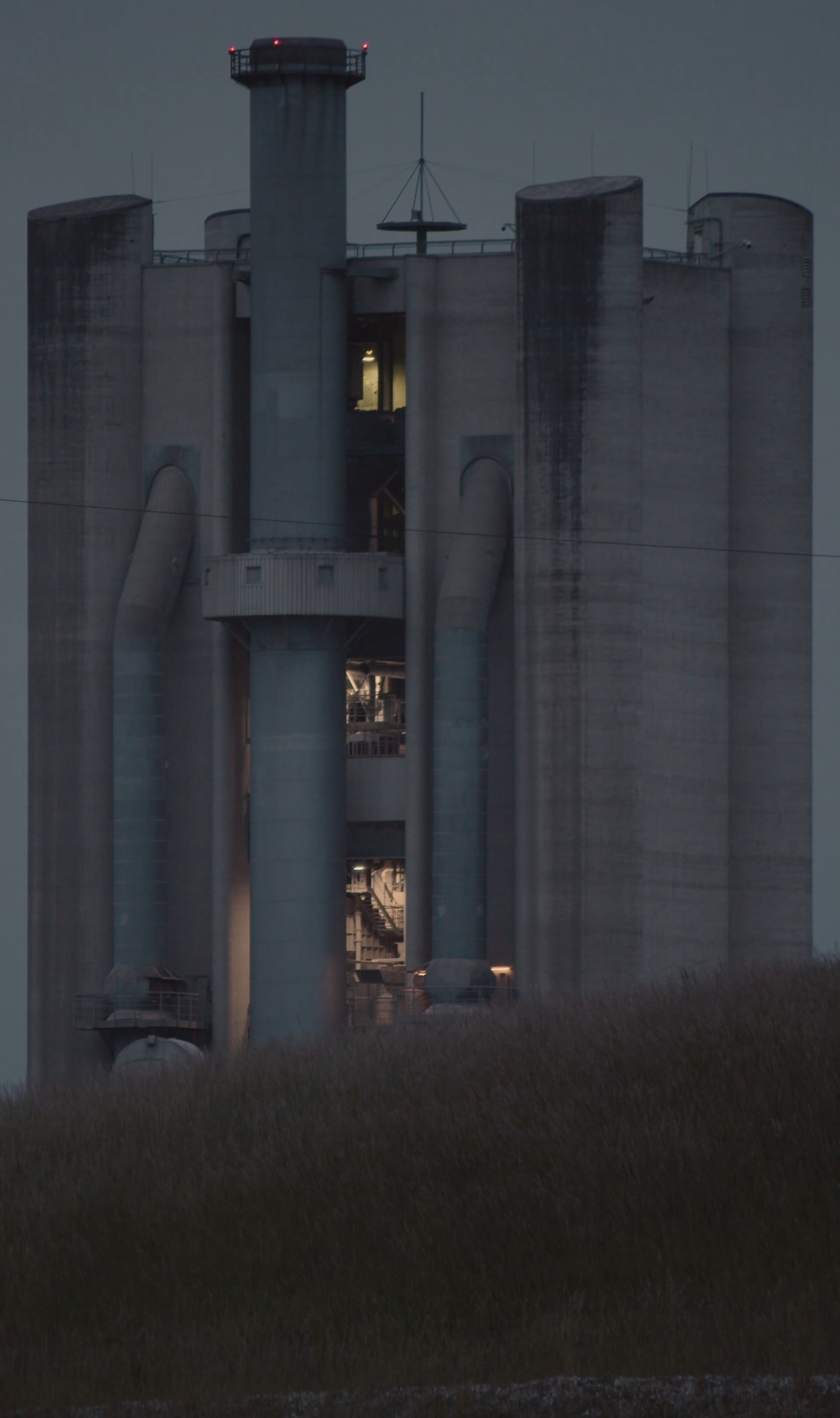
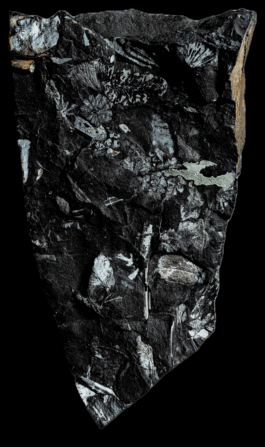
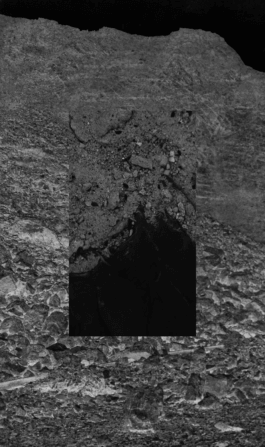

Process
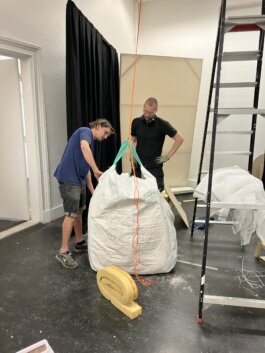




In The Presence of Absence
In The Presence of Absence" explores how the recontextualisation of quarries into nature reserves and hiking hotspots downplays human natural destruction. Grounded in research, the vertically stratified visual essay delves into the levels of exploitation involved, from territorial invasion to extraction and touristic activities, revealing hierarchies and the superior gaze of Western society.
WHAT
Our projected Architecture -Panorama envisions possible scenarios and visually engages architects, as well as generally interested members from the building industries, in a discourse on appealing workspaces which encourage dynamic working routines.
An intriguing design and three--dimensional installation of an -Architecture Panorama, will provide direct, comprehensive and realistic impressions of actual challenges in workplace routines and examples of future-oriented workplace architecture.
Panoramic paintings became very popular in the mid-19th century, representing landscapes, topographic views and historical events. Audiences, immersed in a winding 360° panoramic image, were thrilled by the impression and by becoming part of an illustrated environment – distant in time and location. A prominent example can be found in the Bourbaki Panorama in Lucerne, Switzerland, created by Edouard Castres in 1881.
Charles and Ray Eames presented another form of panorama by creating an intense sensory environment using a multiscreen technique. More than 2,200 still and moving images were selected to depict ‘a typical work day’ in the life of the United States in nine minutes. It is called Glimpses of the USA and premiered in Moscow in 1959. For the film, all images were combined into seven separate film reels and projected simultaneously through seven interlocked projectors onto seven 20- by 30-foot screens suspended within a vast golden geodesic dome (250 feet in diameter). Their leitmotiv: ‘Visual models for matters of practical concern where linear description isn’t enough’.
Rather than painting a comprehensive picture of past work-related landscapes, the Architectural Panorama elicits among observers reactions such as delight and curiosity, especially the interest in stepping out of their own working and imaginary routines to embark on a journey to envision intriguing working scenarios and their respective spaces located in the future.
Pertinent questions dealing with the “Architecture Of The Future” open up new contexts in various cluster topics to communicate in strategic and disruptive way. Complementary and polarizing approaches join and coordinate the different contexts and invite the visitors to face new realities.
Why
The ability to work in dynamic groups and forms has become increasingly essential for the development of any knowledge economy–related company. With the amplified influence of evolving technologies – artificial intelligence (AI) and deep learning – on working routines and the architectural design of working environments, not only do work spaces seem increasingly dated, but also their ability to adapt to future arrangements and uncertainties appears rather limited.
We always value a pioneering spirit to explore and innovate – just like many architects, builders, developers and users actually do. The current condition opens up a multitude of freedoms to pioneer. The format of the Architecture Panorama helps all actors become pioneers in their respective fields. To achieve this, the Architecture Panorama raises awareness of specifics and challenges related to the knowledge economy and provides clues to innovative approaches towards increasingly dynamic working routines and their respective impacts on the built environment.
HOW
The installation of the Open Workshop at the Visual Stream exhibition is framed in a spatial break of various materials, both floating and static, with typographic and pictorial elements. Touchpoints like a thematic archive, filmic contexts, various infographics and theme worlds invite visitors to discover and grasp the vastness of the content. The staging is based on a visual panorama. Working through its three-dimensional the installation visualizes aesthetics and creates an overview scenario. Within all directions, viewers can anticipate impressions and content to get the impression of a holistic, complete density.
Client
Autonomous
Year
2023
Disciplines
Film, Editing, Installation, Writing









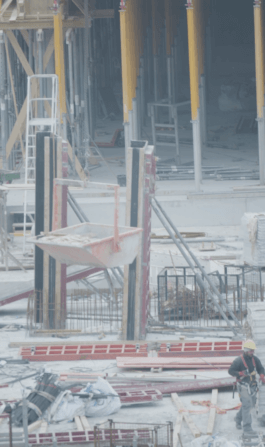






Process




